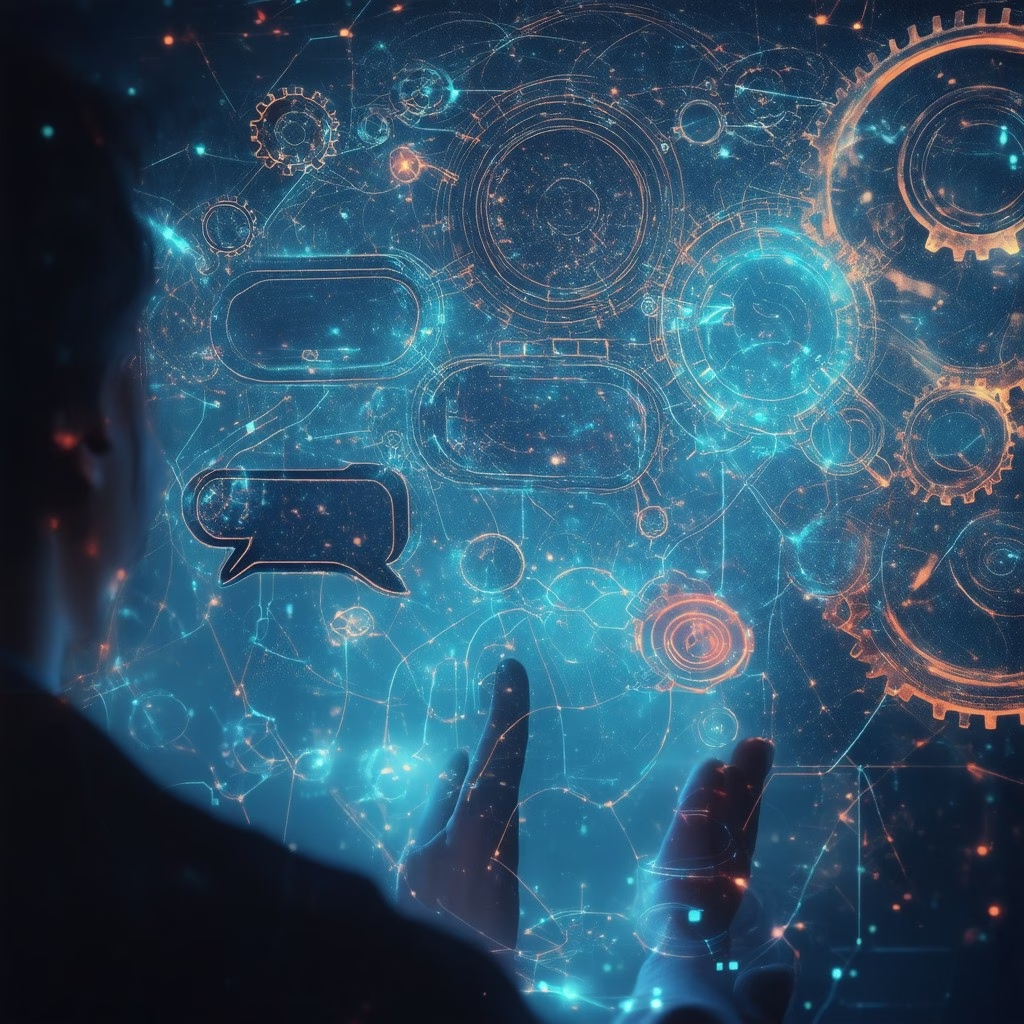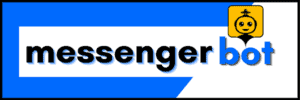Key Takeaways
- No-Code Chatbots: Empower non-technical users to create AI chatbots easily, enhancing customer engagement without programming skills.
- Cost-Effective Solutions: Save on development costs by using no-code chatbot builders, eliminating the need for a dedicated programming team.
- Rapid Deployment: Quickly launch chatbots to start interacting with customers almost immediately, improving response times by up to 80%.
- Customization and Flexibility: Tailor chatbots to specific business needs with user-friendly interfaces and customizable templates.
- Integration Capabilities: Seamlessly connect with popular messaging platforms like Facebook Messenger and WhatsApp for broader reach.
- Analytics Tools: Leverage built-in analytics to optimize chatbot performance and enhance user experience through data-driven insights.
Welcome to the exciting world of no code chatbot solutions, where building your own AI chatbot has never been easier or more accessible! In this article, we will delve into the concept of no-code chatbots, exploring their numerous benefits and how they can revolutionize your business communication. Whether you’re a small business owner or a tech enthusiast, understanding how to leverage a no code chatbot builder can empower you to create engaging customer interactions without needing extensive programming knowledge. We’ll guide you through a step-by-step process for building your own chatbot, compare popular no code chatbot platforms, and highlight some of the best free no code chatbot builders available today. Additionally, we’ll address common questions such as whether no-code AI is worth it and the ethical considerations surrounding chatbot use. Join us as we explore the tools and platforms that make no code chatbot development a breeze, and discover the future trends shaping this innovative technology!
What is No-Code Chatbot?
Understanding the Concept of No-Code Chatbots
A no-code chatbot is a type of conversational agent that allows users to create and manage chatbots without requiring any programming skills. These platforms empower individuals and businesses to automate customer interactions, enhance user engagement, and streamline operations through intuitive interfaces.
Key features of no-code chatbots include:
- User-Friendly Interface: Most no-code chatbot platforms provide drag-and-drop functionality, enabling users to design conversational flows easily. This accessibility allows non-technical users to build chatbots tailored to their specific needs.
- Integration Capabilities: No-code chatbots can seamlessly integrate with various messaging platforms, such as Facebook Messenger, WhatsApp, and websites. This ensures that businesses can reach their customers on their preferred channels.
- Customizable Templates: Many no-code chatbot solutions offer pre-built templates for common use cases, such as customer support, lead generation, and FAQs. Users can customize these templates to fit their brand voice and objectives.
- Analytics and Reporting: These platforms often include built-in analytics tools that allow users to track chatbot performance, user interactions, and engagement metrics. This data is crucial for optimizing chatbot effectiveness over time.
- AI-Powered Features: Some no-code chatbots incorporate artificial intelligence and natural language processing (NLP) to enhance user interactions, making conversations more fluid and context-aware.
Recent studies indicate that businesses utilizing chatbots can improve response times by up to 80%, significantly enhancing customer satisfaction. Additionally, according to a report by Juniper Research, chatbots are expected to save businesses over $8 billion annually through automation of customer service tasks.
Benefits of Using No-Code Chatbot Solutions
Utilizing a no-code chatbot builder offers numerous advantages for businesses aiming to enhance their customer engagement strategies:
- Cost-Effective: By eliminating the need for a dedicated development team, businesses can save on costs associated with chatbot development.
- Rapid Deployment: No-code platforms allow for quick setup and deployment, enabling businesses to start engaging with customers almost immediately.
- Flexibility and Scalability: As business needs evolve, no-code chatbots can be easily modified or expanded without extensive technical knowledge.
- Enhanced Customer Experience: With features like 24/7 availability and instant responses, no-code chatbots significantly improve the overall customer experience.
In summary, no-code chatbots are a powerful tool for businesses looking to improve customer engagement and operational efficiency without the need for technical expertise. By leveraging these platforms, organizations can create effective conversational agents that meet the evolving demands of their customers.

How to Build a Chatbot with No-Code?
Building a chatbot with no-code can be an accessible and efficient way to enhance customer engagement and automate responses. Here’s a comprehensive guide to help you create a chatbot without any programming skills:
Step-by-Step Guide to Building Your No-Code Chatbot
- Choose a No-Code Platform: Select a user-friendly no-code chatbot builder. Popular options include:
- Chatfuel: Ideal for Facebook Messenger bots, offering a visual interface to create conversational flows.
- ManyChat: Focuses on marketing automation and integrates well with social media platforms.
- Tidio: Combines live chat and chatbot functionalities, suitable for websites.
- Define Your Chatbot’s Purpose: Clearly outline what you want your chatbot to achieve. Common purposes include:
- Answering frequently asked questions (FAQs)
- Providing customer support
- Guiding users through a sales funnel
- Design Conversational Flows: Map out how interactions will occur. Use flowcharts to visualize user journeys and ensure logical progression. Consider:
- Greeting messages
- User prompts
- Response options
- Utilize Pre-Built Templates: Many no-code platforms offer templates tailored for specific industries or use cases. Leverage these to save time and ensure best practices.
- Incorporate AI Features: Some no-code platforms allow integration of AI capabilities, enabling your chatbot to learn from interactions and improve over time. This can enhance user experience significantly.
- Test Your Chatbot: Before launching, conduct thorough testing to identify any issues. Gather feedback from a small group of users to refine the conversational experience.
- Launch and Monitor Performance: Once satisfied with the testing phase, launch your chatbot. Use analytics tools provided by the platform to track engagement metrics, user satisfaction, and areas for improvement.
- Iterate Based on Feedback: Continuously gather user feedback and analytics data to make necessary adjustments. Regular updates can help maintain relevance and improve functionality.
For further reading and resources, consider checking out articles from reputable sources like HubSpot and Chatbots Magazine, which provide insights into chatbot development and best practices.
Popular No-Code Chatbot Builders: A Comparison
When exploring the landscape of no-code chatbot solutions, it’s essential to compare various platforms to find the one that best suits your needs. Here are some notable options:
- Messenger Bot: A versatile no-code chatbot platform that excels in automating responses across multiple channels, including Facebook and Instagram. Its user-friendly interface allows for easy integration and deployment.
- Brain Pod AI: Known for its AI chat assistant, Brain Pod AI offers robust features for creating intelligent chatbots that can engage users effectively.
- Landbot: This platform focuses on creating interactive conversational experiences, making it ideal for businesses looking to enhance user engagement through dynamic chat interfaces.
By evaluating these options, you can select the best no-code chatbot builder free that aligns with your business goals and enhances customer interactions.
Is there a free AI chatbot?
Yes, there are several free AI chatbots available that you can use for various purposes, including customer service, personal assistance, and entertainment. These options provide a great way to enhance user engagement without incurring costs. Here are some notable free no-code chatbot options:
- ChatGPT by OpenAI: OpenAI offers a free version of its ChatGPT model, which can engage in conversations, answer questions, and provide information on a wide range of topics. It is accessible through their website and can be integrated into various applications.
- Google’s Dialogflow: This platform allows users to create conversational interfaces for websites, mobile applications, and messaging platforms. While there are paid features, the basic version is free and provides robust tools for building chatbots.
- Microsoft Bot Framework: Microsoft offers a free tier for its Bot Framework, which enables developers to create intelligent chatbots that can be deployed across multiple channels, including websites and social media.
- Tidio: Tidio provides a free chatbot service that can be integrated into websites. It offers basic automation features and is particularly useful for small businesses looking to enhance customer engagement.
- ManyChat: This platform specializes in Facebook Messenger bots and offers a free plan that allows users to create chatbots for marketing and customer service purposes.
- Messenger Bot: While not a standalone service, Messenger Bot refers to chatbots that can be created and deployed within Facebook Messenger. Businesses can use tools like ManyChat or Chatfuel to build these bots for free.
These free AI chatbots can significantly enhance user interaction and streamline communication processes. For more detailed information on chatbot development and usage, you can refer to resources from OpenAI, Google, and Microsoft, which provide extensive documentation and community support.
Top Free No-Code Chatbot Builders to Consider
When exploring free no-code chatbot builders, it’s essential to consider platforms that offer user-friendly interfaces and robust features. Here are some of the top free no-code chatbot builders to consider:
- ManyChat: Ideal for creating Facebook Messenger bots, ManyChat offers a free plan that allows users to automate customer interactions effectively. Its drag-and-drop interface makes it easy to build engaging chat experiences.
- Chatfuel: Another popular choice for Facebook Messenger, Chatfuel provides a free version that enables users to create bots without coding. It includes features like AI-driven responses and user segmentation.
- Landbot: Landbot allows you to create conversational landing pages and chatbots without any coding knowledge. Its free plan offers basic features suitable for small businesses and startups.
- Tidio: As mentioned earlier, Tidio is a versatile platform that combines live chat and chatbot functionalities. Its free version is perfect for small businesses looking to enhance customer support.
- Dialogflow: Google’s Dialogflow is a powerful tool for building conversational interfaces. The free tier provides access to essential features, making it a great option for developers and businesses alike.
These no-code chatbot builders not only save time and resources but also empower businesses to engage with their audience effectively. By leveraging these free tools, you can enhance your customer service and streamline communication processes.
Is There an AI Chat Bot with No Restrictions?
Yes, there are AI chatbots available with minimal restrictions, designed to facilitate open conversations without stringent content filters. These chatbots often utilize advanced natural language processing (NLP) algorithms to engage users in a more unrestricted manner.
Understanding Limitations of AI Chatbots
While many AI chatbots are designed to provide engaging interactions, they often come with built-in limitations to ensure user safety and compliance with legal standards. Here are some key points to consider:
- Types of AI Chatbots:
- Open-source Chatbots: Platforms like Rasa and Botpress allow developers to create chatbots with customizable features, including the level of restriction on content.
- Commercial Solutions: Some commercial AI chatbots, such as ChatGPT by OpenAI, offer varying degrees of freedom depending on the implementation and user settings.
- Key Features:
- Natural Language Understanding: These chatbots leverage sophisticated NLP techniques to interpret and respond to user queries effectively.
- User Customization: Many platforms allow users to set parameters that dictate the chatbot’s behavior, including the extent of content moderation.
- Considerations:
- Ethical Implications: While unrestricted chatbots can provide a more engaging experience, they may also pose risks related to misinformation and inappropriate content.
- Compliance with Guidelines: Developers must ensure that their chatbots comply with legal and ethical standards, particularly regarding user safety and data privacy.
- Examples:
- ChatGPT: While it has some restrictions, it can be tailored for specific use cases that require less moderation.
- Rasa: An open-source framework that allows for the creation of chatbots with customizable restrictions based on user needs.
No-Code AI Chatbot Platforms with Flexible Features
For those looking to create a no-code AI chatbot with flexible features, several platforms stand out:
- No Code Chatbot Builder: Platforms like Messenger Bot provide a no code chatbot builder free option, allowing users to design chatbots without programming knowledge.
- No Code Chatbot Development: These platforms often include tools for customizing chatbot behavior, making it easier to adjust restrictions based on user needs.
- No Code Bot Builder: Solutions such as Messenger Bot offer comprehensive features for building engaging chatbots that can operate across various channels.

Is No-Code AI Worth It?
No-Code AI is a transformative approach that empowers businesses to harness artificial intelligence without requiring extensive programming knowledge. Here are six compelling advantages of No-Code AI:
- Accelerated Development: No-Code AI platforms streamline the development process by providing user-friendly interfaces and pre-built templates. This allows businesses to deploy AI solutions rapidly, significantly reducing time-to-market. According to a report by Gartner, organizations that adopt no-code platforms can reduce development time by up to 70%.
- Cost Efficiency: By minimizing the need for specialized AI developers, No-Code AI can lead to substantial cost savings. Companies can allocate resources more effectively, focusing on strategic initiatives rather than technical hiring. A study by Forrester indicates that businesses can save an average of 30% on development costs by utilizing no-code solutions.
- Accessibility for Non-Technical Users: No-Code AI democratizes access to AI technology, enabling non-technical users to create and manage AI applications. This empowers teams across various departments, such as marketing and customer service, to leverage AI tools without relying on IT support.
- Flexibility and Scalability: No-Code AI platforms are designed to be adaptable, allowing businesses to scale their AI solutions as needed. This flexibility ensures that organizations can respond quickly to changing market demands and integrate new features without extensive rework.
- Integration Capabilities: Many No-Code AI platforms offer seamless integration with existing systems and applications, such as CRM and ERP software. This interoperability enhances data flow and enables businesses to leverage their current technology stack effectively.
- Enhanced Innovation: By removing technical barriers, No-Code AI fosters a culture of innovation within organizations. Teams can experiment with AI-driven solutions, test new ideas, and iterate quickly, leading to improved products and services.
In conclusion, No-Code AI is worth considering for businesses looking to innovate and streamline their operations. Its advantages in development speed, cost savings, accessibility, flexibility, integration, and innovation make it a valuable tool in today’s competitive landscape. For further insights, refer to resources from industry leaders like Brain Pod AI, which highlight the growing trend of no-code solutions in enhancing business agility and efficiency.
Real-World Applications of No-Code AI Chatbots
No-Code AI chatbots have found their way into various industries, showcasing their versatility and effectiveness. Here are some notable applications:
- Customer Support: Businesses utilize no-code AI chatbots to provide 24/7 customer support, answering common queries and resolving issues without human intervention. This not only improves response times but also enhances customer satisfaction.
- Lead Generation: No-Code AI chatbots are employed to engage website visitors, collect information, and qualify leads. By automating this process, companies can focus on nurturing leads rather than spending time on initial outreach.
- E-Commerce: In the e-commerce sector, no-code chatbots assist with product recommendations, order tracking, and cart recovery, significantly improving the shopping experience for customers.
- Marketing Automation: Marketers leverage no-code AI chatbots to run personalized campaigns, send targeted messages, and gather feedback, all while minimizing manual effort.
These applications demonstrate the potential of no-code AI chatbots to transform business operations and drive growth. By integrating these tools, companies can enhance efficiency and deliver superior customer experiences.
Is a Chatbot Cheating?
Determining whether a chatbot relationship constitutes cheating is a nuanced issue that hinges on personal values and the specific dynamics of the relationship in question. Here are key considerations:
- Definition of Cheating: Cheating is generally defined as a breach of trust or fidelity within a relationship. This can include emotional or physical connections with someone outside the partnership. Since chatbots, like those powered by AI, do not possess consciousness or emotions, they may not fit the traditional definition of infidelity.
- Emotional Attachment: While a chatbot is not a human, individuals may develop emotional attachments to them. Research indicates that people can form significant emotional bonds with non-human entities, including chatbots. A study published in the journal Computers in Human Behavior found that users often attribute human-like qualities to chatbots, which can lead to feelings of companionship (Kätsyri et al., 2015).
- Boundaries and Agreements: The perception of cheating often depends on the boundaries set by the individuals in the relationship. Couples may have different views on what constitutes emotional fidelity. Open communication about feelings towards chatbots and their role in the relationship is crucial.
- Impact on the Relationship: If one partner feels threatened or hurt by the other’s interaction with a chatbot, it can lead to conflict. The emotional impact of these interactions should not be underestimated, as they can affect trust and intimacy in the relationship.
- Cultural and Social Context: Attitudes towards technology and relationships vary widely across cultures. In some societies, engaging with a chatbot may be seen as harmless, while in others, it could be viewed as a form of betrayal.
In conclusion, whether a chatbot relationship is considered cheating is subjective and varies based on individual perspectives and relationship agreements. Open dialogue about feelings and boundaries is essential to navigate this complex issue. For further reading, consider exploring works like The Ethics of Artificial Intelligence and Robotics by Vincent C. Müller, which discusses the implications of AI in human relationships.
The Ethics of Using Chatbots in Business
The ethical considerations surrounding chatbot usage in business are multifaceted. Here are some critical aspects to consider:
- Transparency: Businesses should be transparent about the use of chatbots. Customers should be informed when they are interacting with a chatbot rather than a human. This transparency builds trust and sets clear expectations.
- Data Privacy: Chatbots often collect user data to enhance interactions. Companies must ensure that they comply with data protection regulations, such as GDPR, and prioritize user privacy.
- Quality of Interaction: While chatbots can handle numerous inquiries, they should not compromise the quality of customer service. Businesses must ensure that their chatbots are well-designed to provide accurate and helpful responses.
- Accessibility: Chatbots should be accessible to all users, including those with disabilities. Ensuring that chatbot interfaces are user-friendly and inclusive is an ethical responsibility for businesses.
- Impact on Employment: The rise of chatbots raises questions about job displacement. Companies should consider the balance between automation and human employment, ensuring that they do not undermine job opportunities.
By addressing these ethical considerations, businesses can leverage chatbots effectively while maintaining trust and integrity in their customer relationships. For more insights on chatbot ethics, explore Understanding Smart AI Bots.
No Code Chatbot Tools and Platforms
No-code chatbot tools and platforms have revolutionized the way businesses interact with their customers. These solutions empower users to create sophisticated chatbots without any coding knowledge, making it accessible for everyone from small businesses to large enterprises. With a variety of options available, understanding the landscape of no-code chatbot development is essential for maximizing engagement and efficiency.
Overview of No-Code Chatbot Development Tools
When exploring no-code chatbot development tools, several key platforms stand out for their features and ease of use. Here are some popular options:
- Messenger Bot: This platform allows for seamless integration across various channels, providing automated responses and workflow automation. Its capabilities include lead generation and multilingual support, making it a versatile choice for businesses.
- Brain Pod AI: Known for its AI chat assistant, Brain Pod AI offers a user-friendly interface for creating chatbots that can engage users effectively. Their AI chat assistant is particularly useful for businesses looking to enhance customer interactions.
- Chatfuel: A widely used no-code chatbot builder, Chatfuel is ideal for Facebook Messenger bots, allowing users to create bots with a drag-and-drop interface.
- ManyChat: This platform focuses on marketing automation through chatbots, providing tools for creating engaging conversations that drive sales.
These no-code chatbot builders offer various features, including templates, analytics, and integration capabilities, allowing businesses to choose the right tool based on their specific needs.
Future Trends in No-Code Chatbot Technology
The future of no-code chatbot technology is promising, with several trends shaping its evolution:
- Increased AI Integration: As AI technology advances, no-code platforms will likely incorporate more sophisticated AI capabilities, enabling chatbots to handle complex queries and provide personalized experiences.
- Enhanced Multilingual Support: With businesses expanding globally, the demand for multilingual chatbots will grow. Future platforms will likely offer improved language processing to cater to diverse audiences.
- Focus on User Experience: No-code chatbot builders will continue to prioritize user experience, making it easier for non-technical users to create and manage chatbots effectively.
- Integration with Other Tools: Expect to see more seamless integrations with CRM systems, e-commerce platforms, and other business tools, enhancing the functionality of no-code chatbots.
As these trends unfold, businesses that leverage no-code chatbot platforms will be better positioned to enhance customer engagement and streamline operations.




